A while back I showed you how 3D Scanning was used to create the worlds of Star Wars for the video game Battlefront. In this post, I’m writing about the recent movie Roque One: A Star Wars Story and how 3D scanning was used by ILM to create one of the film’s most-discussed visual effects: the digital resurrection of Grand Moff Tarkin.
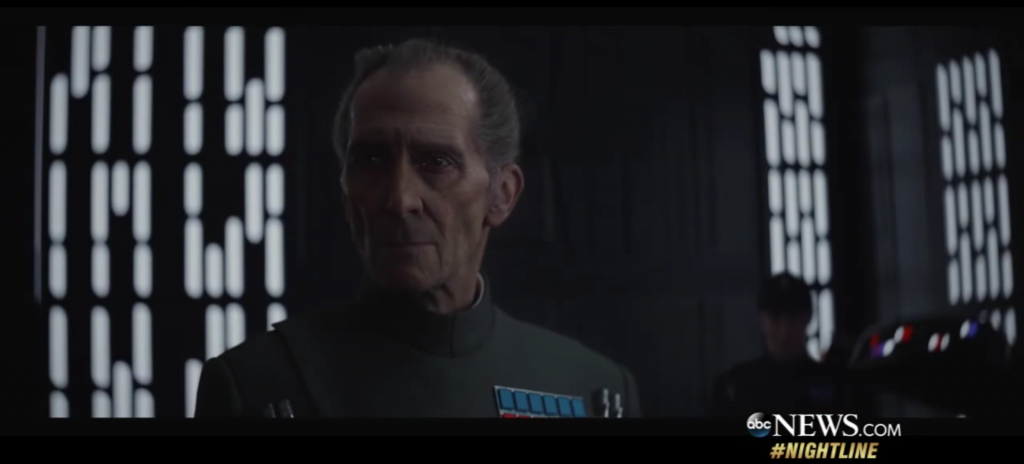
I’m illustrating this with a few screengrabs from a featurette video by ABC News. That video only goes into the 3D scanning part for a few seconds, so I’m writing this to expand on this and give you some information about the 3D scanner that was used.
As you hopefully know, Peter Cushing, the actor that originally played Tarkin in the original Star Wars movie from 1977, died in 1994. In Rogue One, Tarkin is played by actor Guy Henry who wore a facial performance rig (shown below without the cameras).
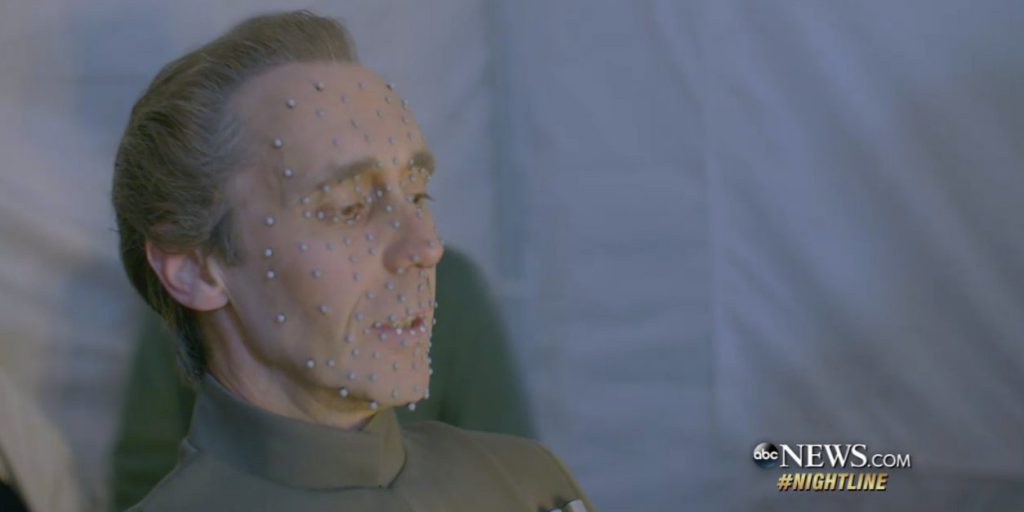
This technique is used a lot in visual effects for film and game design: The location of the markers is captured and re-mapped onto a digital 3D model of the face.
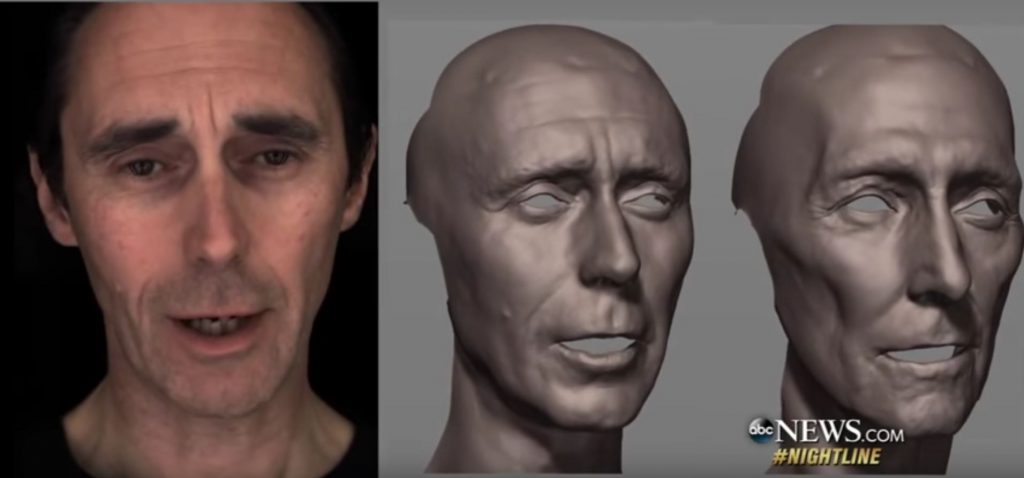
Normally, virtual actors are either sculpted digitally or, more recently, 3D-scanned versions of the actual actors. Of course there where no scans of Peter Cushing, but ILM tracked down a mold of his face that was made to create a special effects face prothesis for the 1984 movie Top Secret.
As you can see below, this mold is extremely detailed. ILM captured every detail of it through 3D laser scanning.
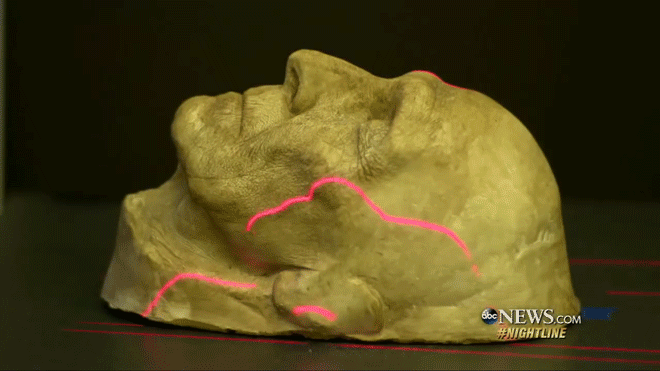
When I saw that shot, I was really curious to which scanner they used for this. Luckily, it’s in the background of another shot where ILM modeler Landis Fields is holding the face mold.
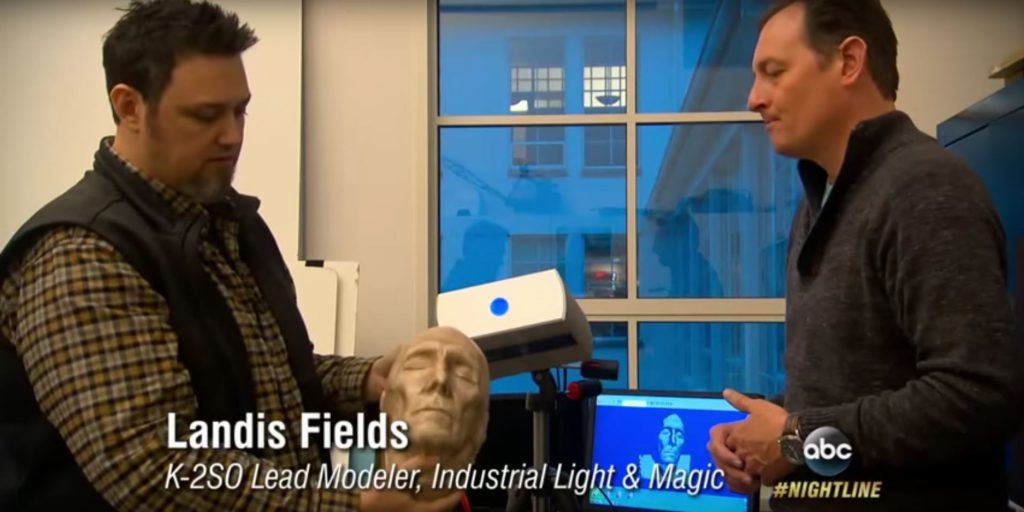
The device in the background is the NextEngine 3D Laser Scanner — a $2,995 desktop 3D scanner that can scan geometry with 0.005 inch (0.13mm) accuracy and can also capture textures with accurate colors.
I’ve reached out to NextEngine to request a review model of their scanner.
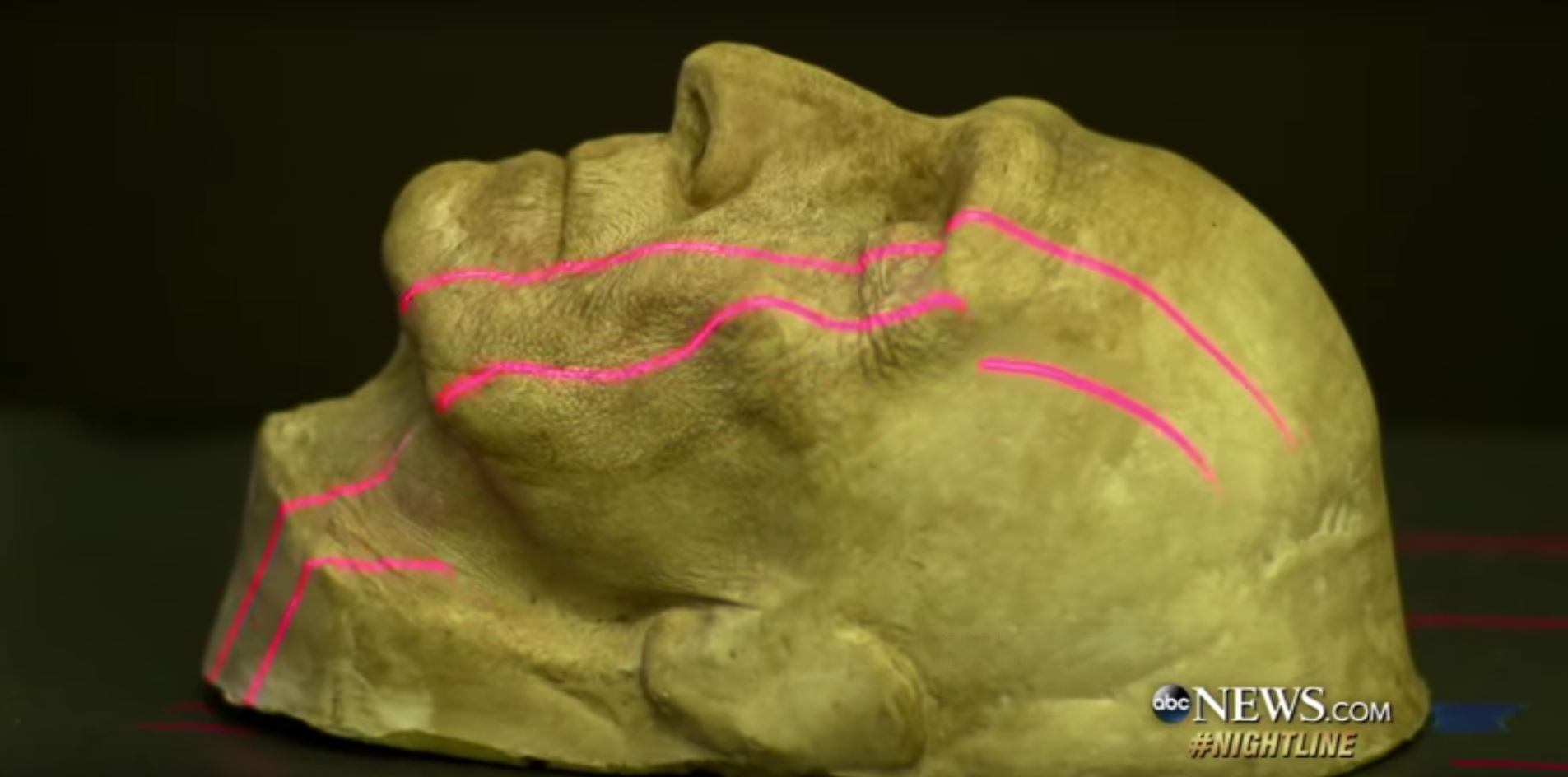
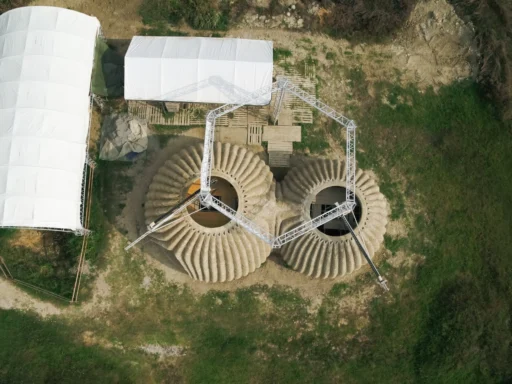
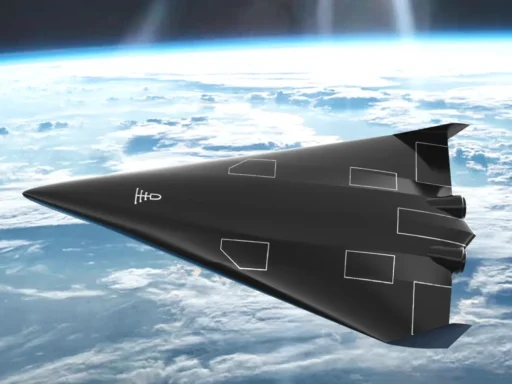
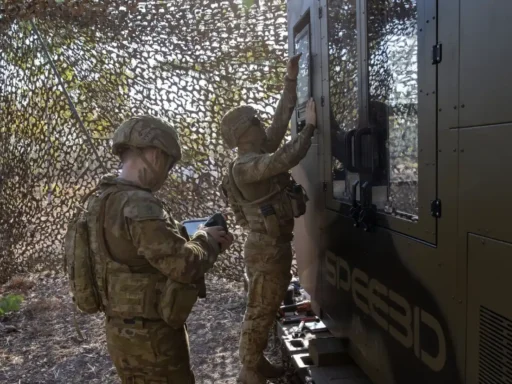

[…] Comparison between Peter Cushing and 3D scan [Image] (n.d.). Retrieved from https://3dmag.com/reviews/3d-scanning-grand-moff-tarkin-rogue-one-star-wars/ […]